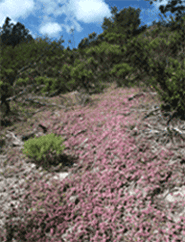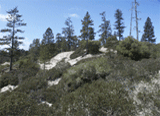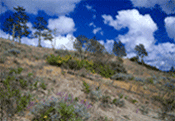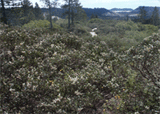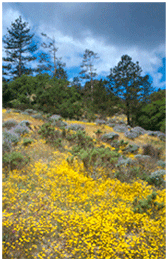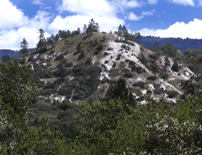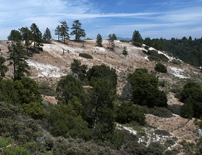The unique conditions created by the maritime climate and the Zayante sand soils in the Santa Cruz Sandhills give rise to biological communities found nowhere else in the world. Amidst the variation observed in community composition the Sandhills, two main communities have been described: Northern Maritime Chaparral with Silverleaf Manzanita, and Maritime Coast Range Ponderosa Pine Forest. These communities are known locally as 'sand chaparral' and 'sand parkland', respectively.
